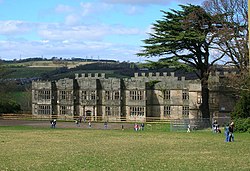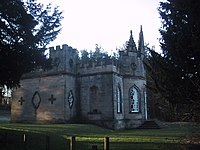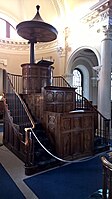
Glamis Castle is situated beside the village of Glamis in Angus, Scotland. It is the home of the Earl of Strathmore and Kinghorne, and is open to the public.

Earl of Strathmore and Kinghorne is a title in the Peerage of Scotland and the Peerage of the United Kingdom. The earl is also Chief of Clan Lyon.

Claude George Bowes-Lyon, 14th and 1st Earl of Strathmore and Kinghorne,, styled as Lord Glamis from 1865 to 1904, was a British peer and landowner who was the father of Queen Elizabeth The Queen Mother and the maternal grandfather of Queen Elizabeth II.
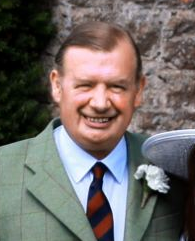
Michael Fergus Bowes-Lyon, 18th and 5th Earl of Strathmore and Kinghorne,, styled Lord Glamis between 1972 and 1987, also known as Mikey Strathmore, was a British Conservative politician, Scots Guards officer and stockbroker. He was a first cousin once removed of Queen Elizabeth II.
Burnopfield is a village in County Durham, in England. It is situated north of Stanley and Annfield Plain, close to the River Derwent and is 564 feet above sea level. There are around 4,553 inhabitants in Burnopfield. It is located 7 miles from Newcastle upon Tyne and 15 miles from Durham.

The Bowes-Lyon family descends from George Bowes of Gibside and Streatlam Castle (1701–1760), a County Durham landowner and politician, through John Bowes, 9th Earl of Strathmore and Kinghorne, chief of the Clan Lyon. Following the marriage in 1767 of the 9th Earl to rich heiress Mary Eleanor Bowes, the family name was changed to Bowes by Act of Parliament. The 10th Earl changed the name to Lyon-Bowes and the 13th Earl, Claude, changed the order to Bowes-Lyon.
Sir William Bowes was a British landowner and M.P.
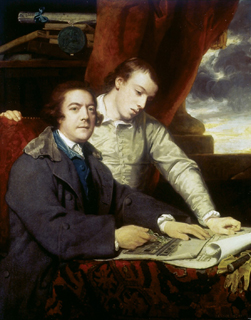
James Paine (1717–1789) was an English architect. He worked on number of country houses such as Chatsworth House, Thorndon Hall and Kedleston Hall.

Hylton Castle is a stone castle in the North Hylton area of Sunderland, Tyne and Wear, England. Originally built from wood by the Hilton family shortly after the Norman Conquest in 1066, it was later rebuilt in stone in the late 14th to early 15th century. The castle underwent major changes to its interior and exterior in the 18th century and it remained the principal seat of the Hylton family until the death of the last Baron in 1746. It was then Gothicised but neglected until 1812, when it was revitalised by a new owner. Standing empty again until the 1840s, it was briefly used as a school until it was purchased again in 1862. The site passed to a local coal company in the early 20th century and was taken over by the state in 1950.

Mary Eleanor Bowes, Countess of Strathmore and Kinghorne was a notable member of the British aristocracy during the Georgian period in the 18th century.

Sir George Bowes was an English coal proprietor and Whig politician who sat in the House of Commons for 33 years from 1727 to 1760.

John Bowes, 9th Earl of Strathmore and Kinghorne, born John Lyon, was a Scottish nobleman and peer. He was the 9th Earl of Strathmore and Kinghorne and one of the maternal ancestors of King Charles III.

John Bowes was an English art collector and thoroughbred racehorse owner who founded the Bowes Museum in Barnard Castle, Teesdale.

Claude Bowes-Lyon, 13th Earl of Strathmore and Kinghorne, styled The Honourable Claude Bowes-Lyon from 1847 to 1865, was a British peer. He was the 13th holder of the Earldom of Strathmore and Kinghorne, the paternal grandfather of Queen Elizabeth The Queen Mother, a great-grandfather of Elizabeth II, and great-great-grandfather of Charles III.
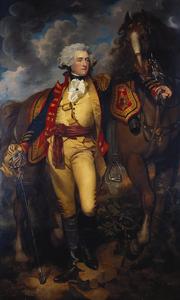
John Bowes, 10th Earl of Strathmore and Kinghorne was a Scottish nobleman and peer. He was the eldest son of John Bowes, 9th Earl of Strathmore and Kinghorne and Mary Bowes, Countess of Strathmore and Kinghorne. He lived mainly on his estates in Durham.
Ridley Hall is an 18th-century country house, now a residential and conference centre, at Bardon Mill, Northumberland. It is a Grade II listed building.

The baronetcy of Conyers of Horden was created in the Baronetage of England on 14 July 1628 for John Conyers of Horden, County Durham.

Streatlam Castle was a Baroque stately home located near the town of Barnard Castle in County Durham, England, that was demolished in 1959. Owned by the Bowes-Lyon family, Earls of Strathmore and Kinghorne, the house was one of the family's three principal seats, alongside Glamis Castle in Forfarshire, Scotland, and Gibside, near Gateshead. Streatlam incorporated some 1,190 acres (4.8 km2) of land, along with an estate consisting of some twenty farms. The last occupant was Lord Glamis, who later became the 15th Earl, although the estate was owned by his father, the 14th Earl, at the time.

The Banqueting House is an 18th-century building, part of the Gibside estate, near Newcastle upon Tyne, England. Its style has been described as "Gothick".
Simon Patrick Bowes-Lyon, 19th and 6th Earl of Strathmore and Kinghorne, styled as Lord Glamis until 2016, is a Scottish peer and landowner, the owner of estates based at Glamis Castle.
